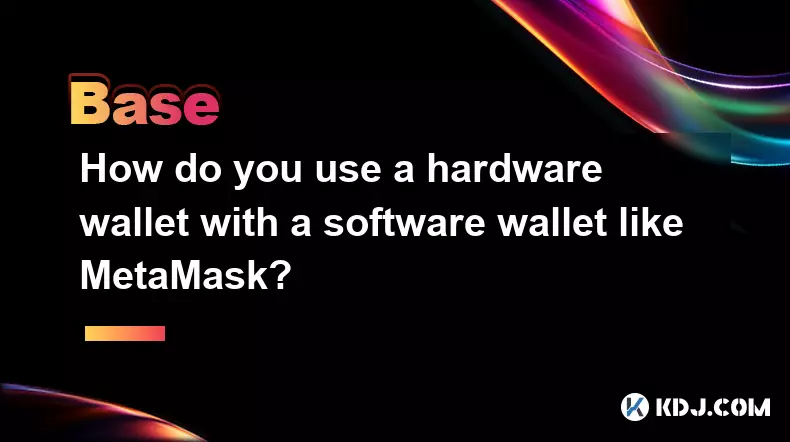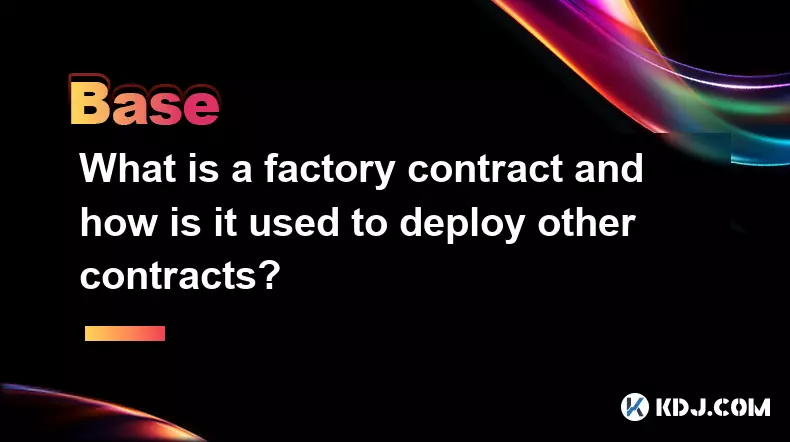-
 bitcoin
bitcoin $101752.865364 USD
-1.09% -
 ethereum
ethereum $3382.985899 USD
-1.38% -
 tether
tether $0.999658 USD
0.04% -
 xrp
xrp $2.272505 USD
-1.51% -
 bnb
bnb $989.089004 USD
0.14% -
 solana
solana $156.962612 USD
-3.08% -
 usd-coin
usd-coin $0.999776 USD
0.01% -
 tron
tron $0.290786 USD
-0.69% -
 dogecoin
dogecoin $0.174594 USD
-2.86% -
 cardano
cardano $0.560085 USD
-3.55% -
 hyperliquid
hyperliquid $40.023704 USD
-5.75% -
 chainlink
chainlink $15.324649 USD
-2.78% -
 bitcoin-cash
bitcoin-cash $493.576540 USD
-3.52% -
 zcash
zcash $571.320038 USD
-12.05% -
 stellar
stellar $0.280066 USD
-4.26%
What is a limit order in crypto?
Limit orders let crypto traders set specific buy/sell prices, offering control and reduced slippage, though execution isn't guaranteed if price targets aren't met.
Sep 11, 2025 at 12:00 am

Understanding Limit Orders in the Cryptocurrency Market
1. A limit order is a type of trade instruction that allows traders to set a specific price at which they are willing to buy or sell a cryptocurrency. Unlike market orders, which execute immediately at the current market price, limit orders only get filled when the market reaches the predetermined price. This gives traders greater control over their entry and exit points, helping them avoid unfavorable price slippage.
2. When placing a buy limit order, the trade will execute only when the market price drops to or below the specified limit price. Conversely, a sell limit order activates when the price rises to or above the set threshold. This mechanism is especially useful in volatile crypto markets where prices can fluctuate rapidly within short timeframes.
3. Limit orders are widely supported across major cryptocurrency exchanges such as Binance, Coinbase, and Kraken. They are a fundamental tool for both novice and experienced traders who aim to optimize their trading strategies based on technical analysis or price targets.
4. One of the key advantages of using a limit order is the ability to automate trading decisions. Traders can set orders in advance and wait for market conditions to align with their strategy without needing to monitor price movements constantly.
5. However, a major limitation is that there is no guarantee of execution. If the market never reaches the specified price, the order remains unfilled. This can result in missed opportunities, especially in fast-moving markets where price targets are bypassed quickly.
Why Traders Rely on Limit Orders
1. Precision in pricing is one of the most valued aspects of limit orders. Traders can define exact entry and exit levels, which is crucial when executing strategies like scalping or swing trading. This precision reduces emotional decision-making and promotes disciplined trading.
2. Limit orders help in minimizing losses during sudden price spikes or drops. By setting a sell limit above the current price or a buy limit below it, traders can protect their positions from impulsive reactions to market noise.
3. They are instrumental in building position gradually. For instance, a trader might place multiple buy limit orders at decreasing price levels to accumulate a cryptocurrency as it corrects, effectively averaging down their cost basis.
4. In low-liquidity markets, market orders can cause significant price impact. Limit orders allow traders to avoid contributing to such volatility by waiting for counterparties to meet their price terms.
5. Day traders often use limit orders to capture small but consistent profits. By setting tight buy and sell limits around support and resistance zones, they can exploit short-term price inefficiencies.
Strategic Use of Limit Orders in Volatile Conditions
1. During periods of high volatility, such as after major news events or protocol upgrades, limit orders help traders stay aligned with their risk parameters. Instead of reacting to panic-driven price swings, they can wait for retracements to enter or exit positions.
2. Traders can combine limit orders with stop-limit orders to create layered risk management systems. For example, a stop-limit can trigger a sell order once a price drops to a certain level, preventing deep losses while still maintaining price control.
3. In bullish market phases, placing sell limit orders above the current price allows traders to lock in profits as momentum pushes prices higher. This ensures they don’t hold assets too long and risk giving back gains.
4. Bearish trends benefit from buy limit orders placed below current levels. These enable traders to enter positions at more favorable prices as the asset declines, assuming a reversal is anticipated.
5. Algorithmic trading bots frequently use limit orders to execute complex strategies. These bots analyze real-time data and place or cancel limit orders dynamically based on predefined rules, enhancing efficiency and responsiveness.
Frequently Asked Questions
What happens if my limit order isn’t filled?If the market price does not reach your specified limit price, the order remains open until canceled or expired. Some exchanges allow setting time limits for how long an order stays active.
Can I change a limit order after placing it?Yes, most exchanges allow you to modify or cancel a limit order before it is executed. This flexibility lets traders adapt to changing market conditions without closing the position prematurely.
Do limit orders incur fees?Fee structures vary by exchange. Some platforms charge lower fees for limit orders because they add liquidity to the market, while others apply standard trading fees regardless of order type.
Are limit orders suitable for all cryptocurrencies?While limit orders can be used for any tradable crypto asset, their effectiveness depends on market liquidity. Highly liquid coins like Bitcoin and Ethereum are more likely to fill limit orders efficiently compared to low-volume altcoins.
Disclaimer:info@kdj.com
The information provided is not trading advice. kdj.com does not assume any responsibility for any investments made based on the information provided in this article. Cryptocurrencies are highly volatile and it is highly recommended that you invest with caution after thorough research!
If you believe that the content used on this website infringes your copyright, please contact us immediately (info@kdj.com) and we will delete it promptly.
- Ripple (XRP) in 2026: Hold or Fold? A Look at XRP's Future and Emerging DeFi Alternatives
- 2025-11-08 18:35:01
- Zcash ZEC Coin Price Explosion: From Privacy Niche to Center Stage
- 2025-11-08 18:55:01
- Berachain Price Prediction: Navigating the Honeycomb Hype in Crypto
- 2025-11-08 18:55:01
- Arthur Hayes, Gold, and Bitcoin: A Modern Monetary Trinity?
- 2025-11-08 19:15:01
- Shiba Inu's Next Move: Navigating a Shifting Market
- 2025-11-08 19:20:01
- Pakistan's Crypto Crossroads: Balancing Opportunity with Asset-Backed Realities
- 2025-11-08 19:20:01
Related knowledge

How does a crypto insurance protocol work?
Nov 08,2025 at 12:39am
Understanding Crypto Insurance Protocols1. A crypto insurance protocol operates by offering financial protection against losses incurred from digital ...

What is token composability and why is it called "DeFi Legos"?
Nov 09,2025 at 06:39am
Bitcoin's Role in Decentralized Finance1. Bitcoin remains the cornerstone of decentralized finance, serving as a benchmark for value and trustlessness...

What is an "exploit" versus a "hack" in the context of smart contracts?
Nov 09,2025 at 12:40am
Understanding Exploits in Smart Contracts1. An exploit refers to the utilization of a known vulnerability within a smart contract’s code to gain unint...

What is a decentralized storage network and how does it compare to cloud services?
Nov 07,2025 at 11:59pm
Understanding Decentralized Storage Networks1. A decentralized storage network distributes data across a peer-to-peer infrastructure rather than relyi...

How do you use a hardware wallet with a software wallet like MetaMask?
Nov 09,2025 at 04:20am
Connecting a Hardware Wallet to MetaMask1. Ensure your hardware wallet is updated with the latest firmware. Devices like Ledger or Trezor require up-t...

What is a factory contract and how is it used to deploy other contracts?
Nov 08,2025 at 04:20am
Understanding Factory Contracts in Blockchain Development1. A factory contract is a smart contract designed to create and deploy other smart contracts...

How does a crypto insurance protocol work?
Nov 08,2025 at 12:39am
Understanding Crypto Insurance Protocols1. A crypto insurance protocol operates by offering financial protection against losses incurred from digital ...

What is token composability and why is it called "DeFi Legos"?
Nov 09,2025 at 06:39am
Bitcoin's Role in Decentralized Finance1. Bitcoin remains the cornerstone of decentralized finance, serving as a benchmark for value and trustlessness...

What is an "exploit" versus a "hack" in the context of smart contracts?
Nov 09,2025 at 12:40am
Understanding Exploits in Smart Contracts1. An exploit refers to the utilization of a known vulnerability within a smart contract’s code to gain unint...

What is a decentralized storage network and how does it compare to cloud services?
Nov 07,2025 at 11:59pm
Understanding Decentralized Storage Networks1. A decentralized storage network distributes data across a peer-to-peer infrastructure rather than relyi...

How do you use a hardware wallet with a software wallet like MetaMask?
Nov 09,2025 at 04:20am
Connecting a Hardware Wallet to MetaMask1. Ensure your hardware wallet is updated with the latest firmware. Devices like Ledger or Trezor require up-t...

What is a factory contract and how is it used to deploy other contracts?
Nov 08,2025 at 04:20am
Understanding Factory Contracts in Blockchain Development1. A factory contract is a smart contract designed to create and deploy other smart contracts...
See all articles





















![The Graph Price Prediction [GRT Crypto Price News Today] The Graph Price Prediction [GRT Crypto Price News Today]](/uploads/2025/11/07/cryptocurrencies-news/videos/690d4df44fe69_image_500_375.webp)



















































